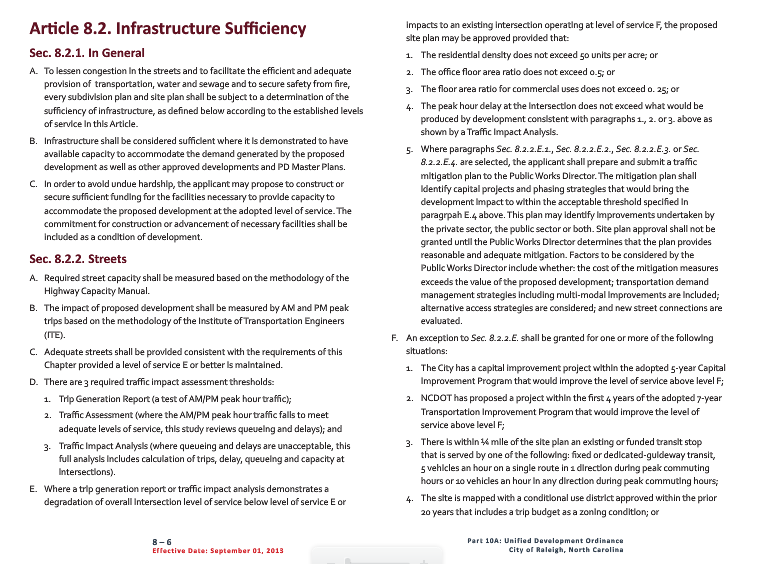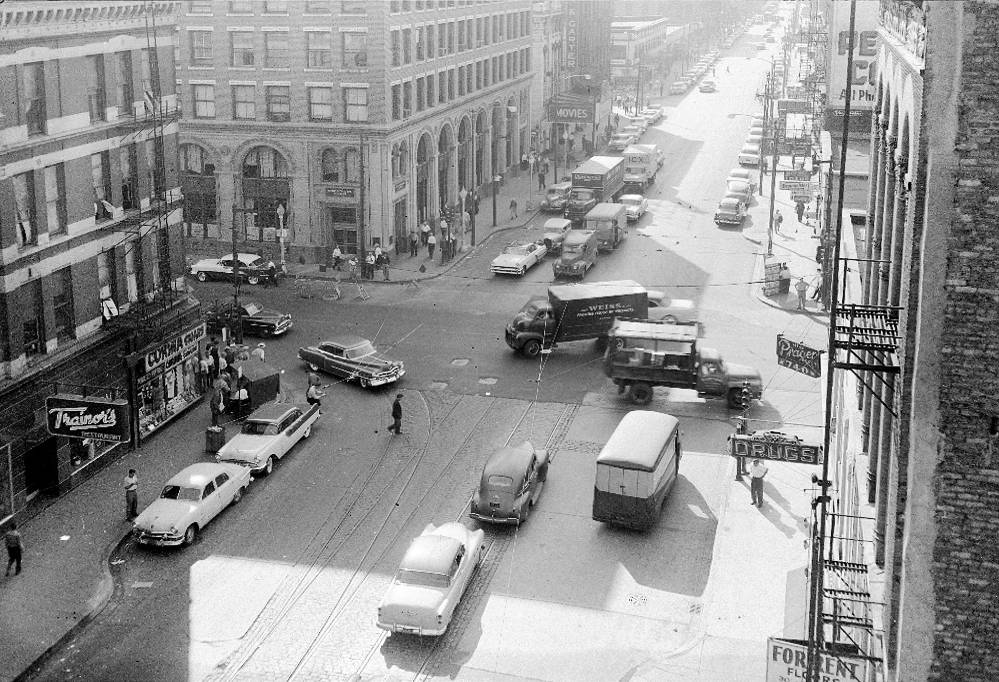In 1955, work began on the Chicago Area Transportation Study, which sought to analyze the volume of traffic to and from the central business district.
The survey, at the time the largest ever conducted, cost more than $700,000 and employed a peak of 368 people. Although work first began in 1955, it was not released to the public until September of 1962.
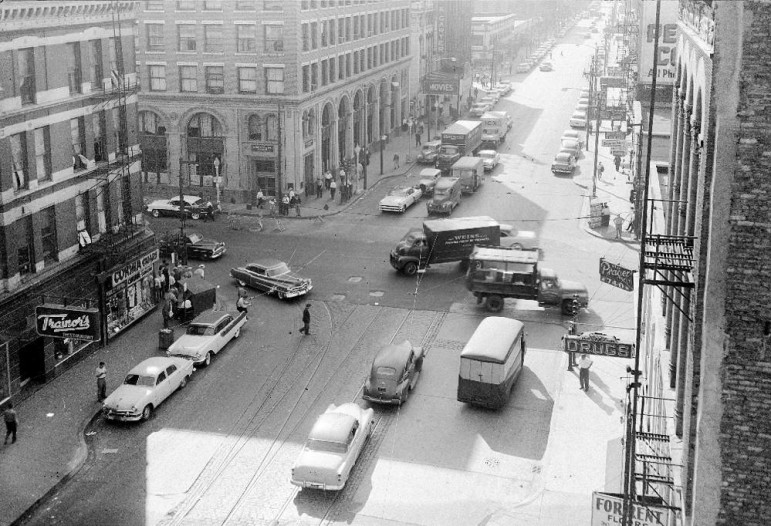
Chuckman
Chicago, 1955
Traffic planning in 2016 is more of an exact science, based largely on standards laid out in the Trip Generation Manual, produced by the Institute of Transportation Engineers. The ITE describes itself as “an international educational and scientific association of transportation professionals who are responsible for meeting mobility and safety needs.”
The 9th edition of the manual runs for more than 2,000 pages and covers trip generation rates for everything from dog tracks and zoos to truck stops and baby superstores. More than 5,500 studies are contained within the report’s database.
At City Council’s work session on Tuesday, Todd Delk from the City’s office of Transportation Planning gave a presentation on the various requirements for producing a Traffic Impact Analysis study and the methods through which those analyses are obtained.
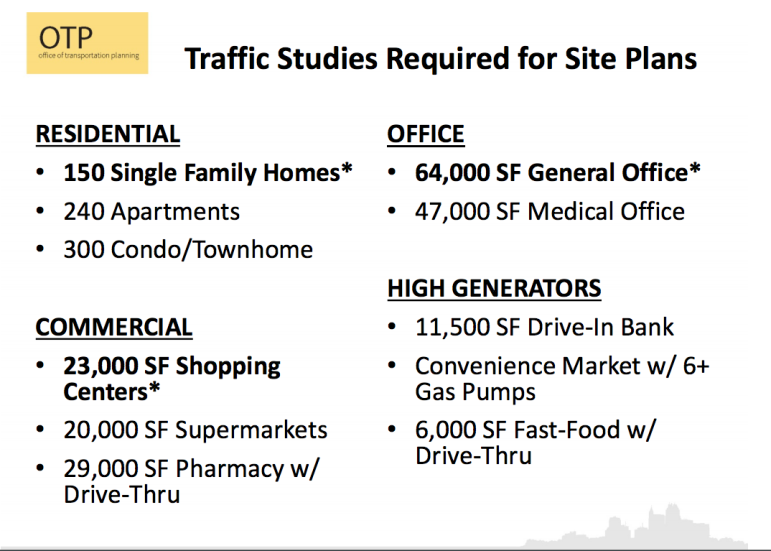
Among the site plans that require traffic studies are ones that have shopping centers larger than 23,000 square feet, grocery stores larger than 20,000 square feet and apartments with more than 240 units. Although an office must be 64,000 square feet to require a traffic study, a fast-food restaurant with drive-thru only needs to be 6,000 square feet.
Outside of these requirements, Delk said staff or Council can request that either the developer or City staff perform a TIA for any project they deem necessary.
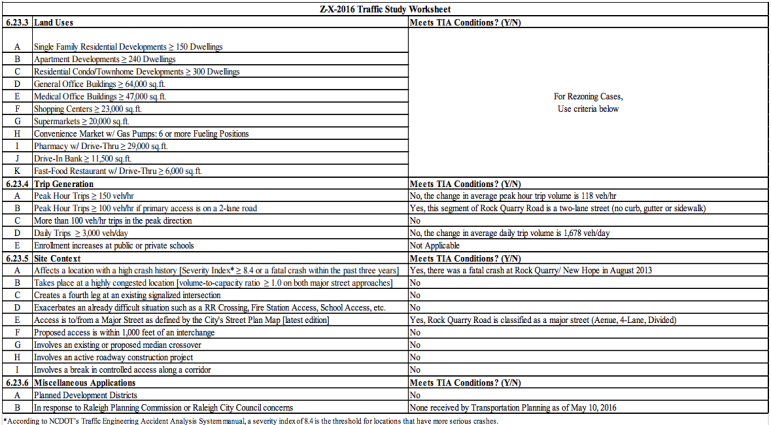
This is a break down of some of the requirements for a TIA
Councilor David Cox asked at the work session whether this threshold could be lowered, and Transportation Planning Manager Eric Lamb said this would likely require more staff or the hiring of outside consulting firm.
The Traffic Impact Analysis evaluation involves what Delk described as a “Standard ‘Four-Step’ Travel Demand Process” that begins by determining the number of trips by using data from the Trip Generation Manual. This first step, not surprisingly, is titled Trip Generation.
Next up is Trip Distribution, which counts existing traffic and uses travel patterns and assumptions to predict the future flow of traffic. This step is followed by Mode Choice, which determines how future trips will be made, and finally, Trip Assignment, which uses historical data to predict future trips.
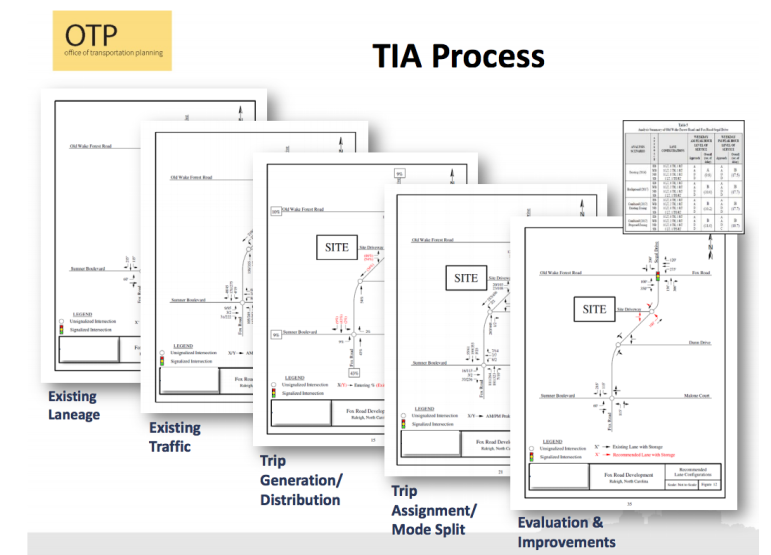
The requirements for traffic analysis studies are laid out and explained in detail in the City’s Unified Development Ordinance.
Section 8.2.1, which deals with infrastructure sufficiency for site plans, notes that in order to “lessen congestion in the streets and to facilitate the efficient and adequate provision of transportation,” developers will be “subject to a determination of the sufficiency of infrastructure.”
It also notes that “…the applicant may propose to construct or secure sufficient funding for the facilities necessary to provide capacity to accommodate the proposed development at the adopted level of service.”
In certain cases, notably those zoned Downtown Mixed Use, TIA studies are not required, and traffic mitigation can be exempted under certain conditions, such as if it’s for a City project within the five-year Capital Improvement Plan.
